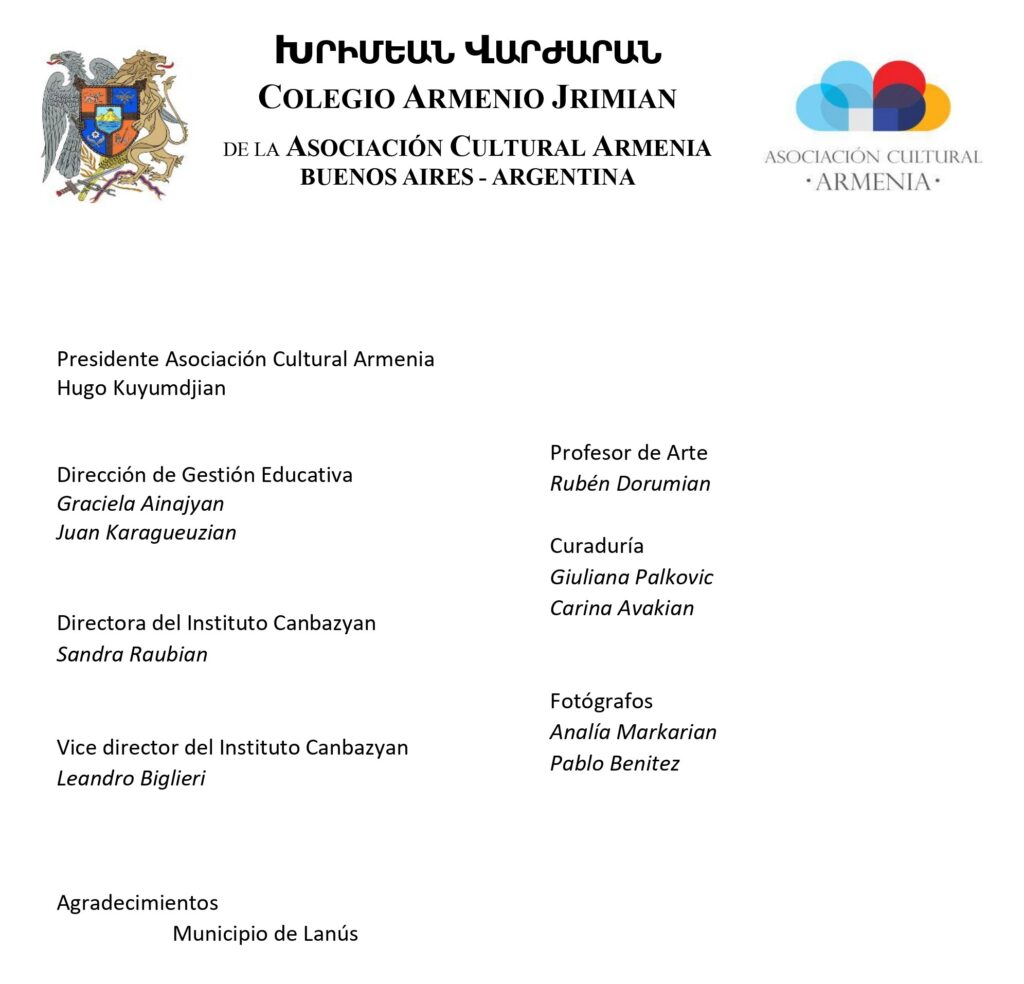El Colegio Armenio Jrimian es un edificio de muros muy altos, que ocupa un cuarto de la manzana de uno de los barrios de Lanús.
Desde su inauguración esos muros sólo podían atravesarlos “los armenios”. Los “armenios” que habían podido escapar del horror del Genocidio perpetrado por el Estado turco – otomano y buscaban un lugar donde refugiarse, donde resguardar su cultura, su idioma y sus costumbres para que no desaparecieran.
Cuando a partir de mediados de los ’90, los directivos institucionales deciden abrir la escuela a toda la comunidad, esos muros ya podían ser atravesados por todos lo que quisieran. Esa imagen, sumada a los hechos de vandalismo que cotidianamente sufrían las paredes de la escuela, fueron los que inspiraron al profesor de arte para iniciar el proyecto Murales.
“Murales” es un proyecto que este año cumple sus primeros 15 años.
Allá por el 2008, el profesor de arte propone “conquistar” las paredes del exterior de la Escuela pintando murales que reflejen la identidad, la cultura institucional.
Ello genera salir del calor confortable del aula y de las prácticas convencionales… La osadía y la impertinencia de un docente que busca incomodar-se… La confianza en que propuestas inusuales puedan mejorar aprendizajes… Jóvenes expectantes, atentos a nuevas consignas, con ganas de que el despliegue lúdico vaya de la mano del nivel académico.
Todo eso y más se requiere para aventurarse a enseñar distinto y a sembrar un proyecto.
Se trabaja sobre el artista para preparar el boceto o la creación propia, la elección de colores, la división en equipos de trabajo. Todo configura a cada joven como un creador de arte, un hacedor de historia y ciudadanía.
El proyecto Murales implementado con los alumnos de 6° año del Secundario consiste en conocer y recrear obras del acervo universal en un espacio cotidiano.
Tiene que ver con la pertenencia, con afectar al contexto a partir de la creatividad colectiva, con la posibilidad de que el espacio vacío se llene de arte, mostrándole al barrio parte de la identidad institucional en su hacer.
Se ofrece la calle, los muros externos se resignifican y se entienden como hojas en blanco para la producción propia y grupal. Desplegar el arte como manifestación cultural de todos. Compartir belleza, aprender arte, pero también a ser ciudadanos.
Después, la constancia del que propone, la paciencia de los que acompañan diariamente los obstáculos cotidianos que surgen, la institución que sostiene, el enriquecimiento que se logra cuando se escuchan las voces de los protagonistas, hacen el resto.
En el mural quedan las huellas de todos y de ninguno en particular. Se trata de reconocer toda la obra como propia sin embargo a la vez, nadie puede decir que es sólo suya. Es una verdadera construcción colectiva en la que se intenta valorizar el espacio público sensibilizando, concientizando y movilizando a la comunidad local, al barrio. Convivencia, arte, relaciones con la comunidad.
El proyecto Murales compartido en esta muestra fotográfica logra trasladarnos a las paredes mediante una serie de obras que nos detienen en tiempo y espacio narrándonos visualmente las producciones que se sitúan a lo largo ellas.
Aquí encontraremos la resignificación de famosas obras vanguardistas, así como también, diseños exclusivos de los jóvenes artistas en el marco de un proyecto institucional orientado al vínculo entre culturas. Dichas intervenciones artísticas, nos sumergen en un mundo donde las paredes son activas, dialogan y provocan la interacción con las personas que habitan el espacio.
El proyecto Murales nació loco, pensado como poco posible y a corto plazo. Pero quince promociones a punto de egresar aprendieron de él, multiplicaron cultura, salieron a la calle y dejaron huella.
¡Y no serán los últimos!: la promoción 2023 ya tiene preparados sus colores.
Y así seguirán otros, nuevos jóvenes, otras miradas. Buscando más veredas para abrir nuevos espacios de cultura, alentando aprendizajes presentes y por-venir.
“Seremos eternos” escribió la promoción 2017 en un mural.
Nos preguntamos: ¿quiénes? ¿Los jóvenes? o ¿los aprendizajes?
Ambos. Jóvenes y aprendizajes son un buen equipo.
Siempre.


